A wide array of trends are combining to change the way consumers make their food choices and the products they decide to buy – as proven by 59% of UK consumers changing their diet in the past five years. Now Covid has accelerated these shifts, with 29% making changes since March 2020. In partnership with Strategy& (PwC), we conducted research into these shifting behaviours and attitudes, and dug into our own data to find the key factors driving this change.
Health
Health has been behind the majority of changes consumers have made to their diets, from seeking to lose weight (41%, October 2020) or wanting to feel healthier (34%) to looking to maintain their immune system (14%). And we can see this bear out in Google trends data:
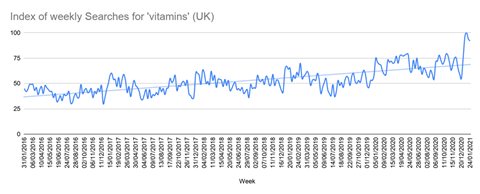
The main change people made to their diets pre-Covid was reducing sugar (39%), but by October the main focus was on increasing levels of fruit and vegetables (40%), up 13% in the period.

People’s conflicted attitudes towards sugar have played out in the way they search for various related terms. Since the first lockdown, we’ve seen a spike in comfort eating and snacking, but also a heightened consciousness about dietary health. The first lockdown in March led to a significant spike in Google Searches for ‘sugar substitute’. Yet lockdowns have also driven up interest in comfort foods like ‘biscuits’.
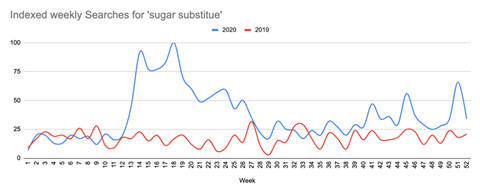
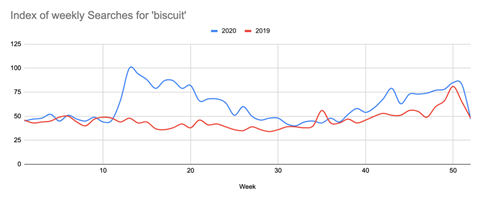
Ethical beliefs
Consumers are starting to make changes to their diets based on issues such as sustainability and animal welfare. Around one in six consumers surveyed said they had changed their diet for one of those two reasons (16% pre-Covid, falling slightly to 13% in October 2020). This trend is most common among 18 to 34-year-olds, with 17% saying they have changed their diet for environmental and ethical reasons.
All eyes on gen Z
Since the start of the pandemic, generation Z consumers have been the most likely to change their diets, with 36% of respondents saying they had made a change compared to 28% of 35 to 54-year-olds and 24% of 55-year-olds and above. While they may lack the spending power of older generations, their behaviours indicate the direction of travel for many trends. The younger demographic is more likely to change their diet for environmental reasons and they are also looking to become better informed, turning to digital formats for information about wellbeing and diet. They’re using social media, health tracking apps and podcasts to guide their nutritional choices and meet their health goals.
The role of on-demand and local
The shift to online grocery shopping looks set to persist, whether buying direct from retailers (including subscription providers) or through marketplaces such as Deliveroo.

More than a fifth (21%) of consumers surveyed increased the amount they spent online during 2020 – additionally, 13% say they would do so in the next 12 months. Consumers are also seeking to spend more of their money with local, independent businesses. Fourteen per cent of consumers expect to do so over the next 12 months. And the demands for local and convenient are by no means mutually exclusive. With the growing range of delivery services and marketplaces available to independent retailers, they are increasingly able to quickly meet local delivery needs.
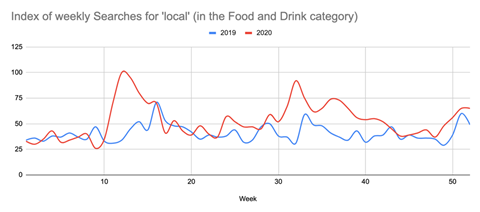
Although Covid-19 has accelerated or changed many of the trends we’ve explored, it should not be assumed they will recede when restrictions begin to lift. As the research shows, many of these trends were established before the pandemic. Furthermore, after such a long period of disruption since the initial lockdown in March 2020, much of the new experimentation and behavioural change will have generated new habits, from a move towards the greater convenience of home delivery to increased goal-setting around health and wellbeing.
Download the full report here.








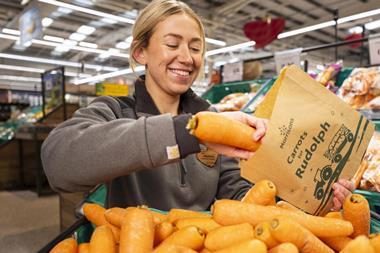











No comments yet